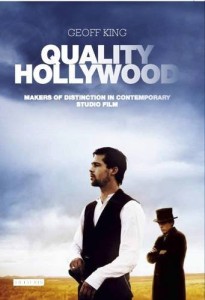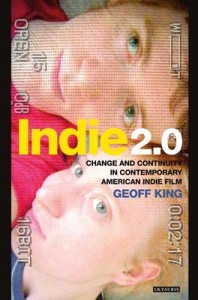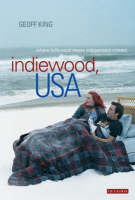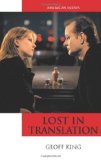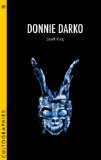This is a list of my published work to date on American indie or arthouse cinema and related aspects of film. My principal publications on other subjects are here.
Books
Arthouse Crime Scenes: Art Film, Genre and Crime in Contemporary World Cinema, New York: Bloomsbury, December 2024; expensive hardback only at this stage
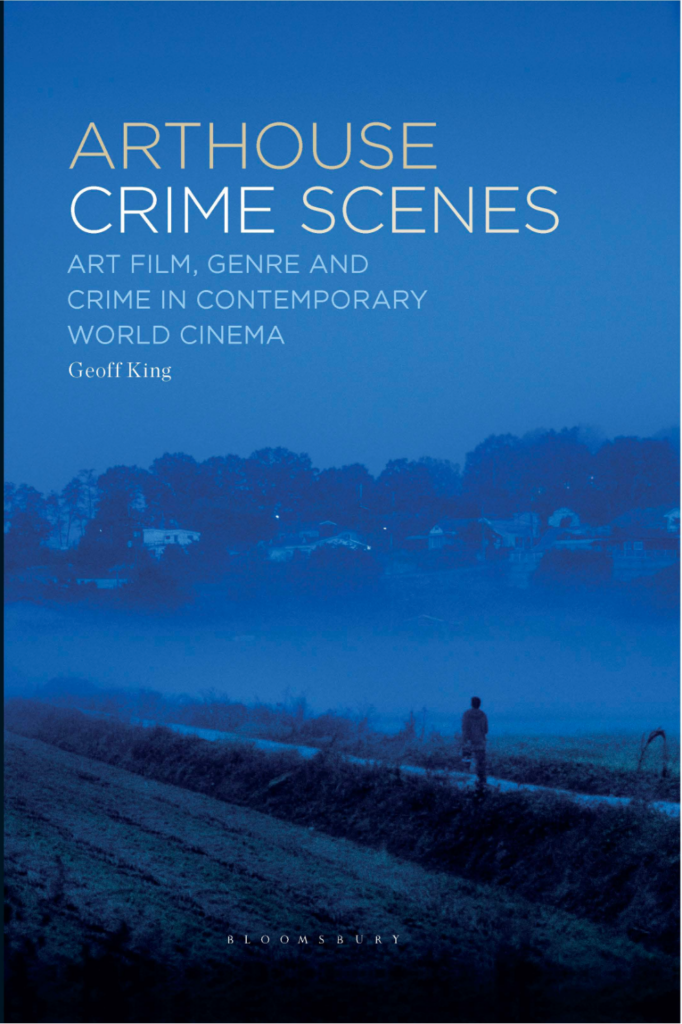
Cover blurb:
How is crime represented in art cinema? And how can this be understood in the context of global sociopolitical and film-industrial trends? Crime might be shown or lurk only at the edges. It might be left unresolved or unexplained. Arthouse crimes can be petty and small scale or raise big questions associated with the arthouse sector: political issues, the nature of humanity, truth and knowability.
Arthouse Crime Scenes is the first book to address the relationship between art cinema and crime, contributing to the study of both categories. Case studies are provided of works by celebrated filmmakers including Lucretia Martell, Kleber Mendonça Filho, Bong Joon Ho, Nuri Bilge Ceylan, Hirokazu Kore-eda, Jia Zhangke, Andrey Zvyagintsez and Lee Chang-dong.
Textual analysis is combined with focus on social and industrial contexts. A recurring theme is the situation of arthouse crime films within differing manifestations of broader processes of late-modern neoliberal globalization and cultural hybridity. Approaches examined range from the oblique to social realism and other mixtures of crime and arthouse tendencies.
Extracts, including the introduction, part of the first chapter and the table of contents are available on the publisher’s website here
The Cinema of Discomfort: Disquieting, Awkward and Uncomfortable Experiences in Art and Indie Film, New York: Bloomsbury, 2022; paperback, 2023
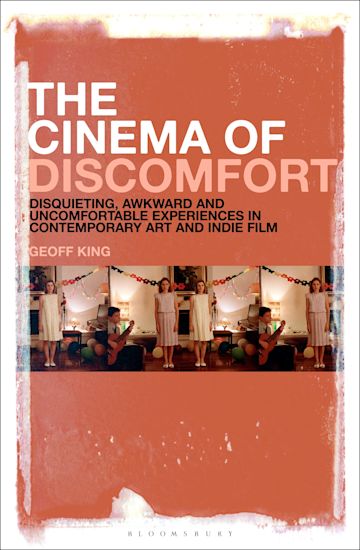
This is the cover text:
How do we understand types of cinema that offer experiences of discomfort, awkwardness or disquieting uncertainty? This book examines a number of examples of such work at the heart of contemporary art and indie film. While the commercial mainstream tends to offer comforting viewing experiences or moments of discomfort that exist largely to be overcome, The Cinema of Discomfort analyses films in which discomfort is offered in a sustained manner. Cinema of this kind confronts us with material such as distinctly uncomfortable sexual encounters. It invites us into uncertain relationships with awkward and sometimes unlikable characters. It presents us with challenging behaviour or what are presented as uncomfortable realities. It often refuses information on which to base judgments. More discomfortingly, cinema of this kind tends to provoke uncertainty at the level of what emotional responses we are encouraged to have towards difficult, sometimes controversial, characters or events.
The Cinema of Discomfort examines a number of case-studies, including Palindromes by Todd Solondz (US) and Dogtooth from Yorgos Lanthimos (Greece), along with other examples from Austria, Sweden, the UK, the US and Germany. Offering close textual analysis of the manner in which discomfort is generated, it also asks how we should understand the appeal of such work to certain viewers and how the existence of films of this kind can be explained, as products of both their socio-cultural context and the more particular institutional realms of art and indie film.
Positioning Art Cinema: Film and Cultural Value, London: I.B. Tauris, 2019 (paperback edition, 2022)
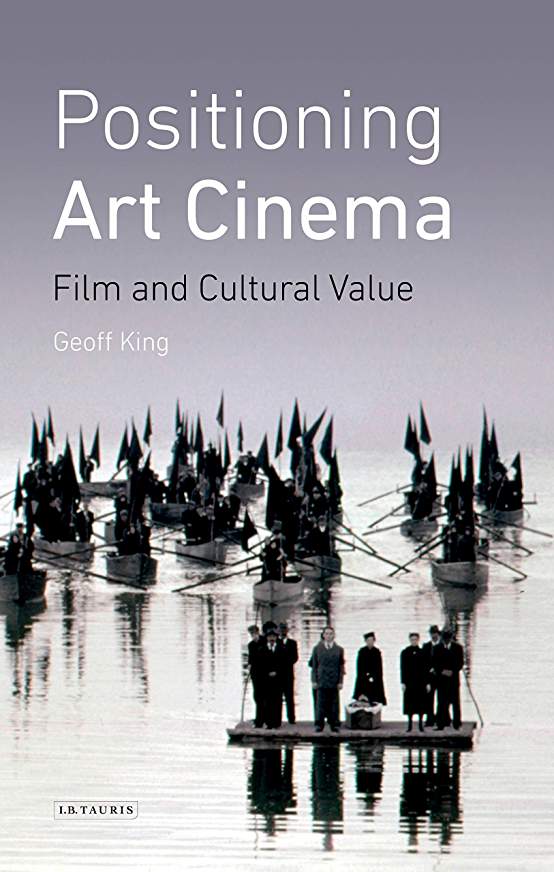
Developing central ideas in Quality Hollywood, my previous book, Positioning Art Cinema focuses particularly on the manner in which specific kinds of cultural value tend to be ascribed to art cinema. It examines how works of art cinema are positioned in the film marketplace, by critics and particularly in academic analysis. Such positioning are situated within a broader range of discourses through which differential notions of cultural value are constructed. I argue here that there is no single definition of art cinema, although a number of distinct and recurrent tendencies are identified. At one end of the spectrum are films accorded the most ‘heavyweight’ status, offering the greatest challenges to viewers. Others mix aspects of art cinema with more accessible dimensions such as uses of popular genre frameworks and ‘exploitation’ elements involving explicit sex and violence.
Quality Hollywood: Markers of Distinction in Contemporary Studio Film, London: I.B.Tauris, 2016. Amazon.co.uk Amazon.com
This is the first book to study the phenomenon of the contemporary Hollywood ‘quality’ film, a type of production that continues to persist within the studio sector despite its seemingly ever-increasing dominance by the high-cost franchise blockbuster. I examine the basis on which certain kinds of films make claims to a degree of quality distinction from what is usually associated with ‘the mainstream’, locating this within the broader spectrum that runs from the independent sector to Indiewood, the quality end of Hollywood and the corporate blockbuster. In doing so, this book continues a project begun with my books on indie film and Indiewood, probing more deeply into the underlying basis of the kinds of value judgements involved in the ascription of quality to some types of films – at the expense of others. This is located here within a much longer historical and cultural tradition, the basis of which is of equal relevance to films from the indie sector and other forms of ‘speciality’ film (in my next book, I’m exploring these issues further in relation to the realm of international art cinema).
Quality Hollywood explores these issues through case study examples that themselves represent different points within the quality/mainstream spectrum:Â Inception, The Social Network, The Assassination of Jesse James by the Coward Robert Ford, Mystic River, Blood Diamond and A.I. Artificial Intelligence. As well as examining the relative degrees to which some films mark themselves out as different from the studio norm, the book considers the reasons for the persistence of such production in the current studio context. These include the scope such films offer to earn prestige, particularly through Oscar wins or nominations that can convert prestige into revenue, and the power retained by the individual filmmakers involved in many examples.
Indie 2.0: Change and Continuity in Contemporary American Indie Film, London: I.B.Tauris/New York: Columbia University Press, 2013 Amazon.co.uk Amazon.com
A study of various aspects of indie cinema since 2000 that argues that, while some aspects of the sector have changed, much more continuity exists with practices from the previous two decades or so than has generally been acknowledged. This is true even in the ‘cutting edge’ area of developments in digital production, distribution and exhibition, where new online initiatives (from crowdfunding to DIY release) are typically combined with more traditional strategies. Detailed case studies are offered of other examples including the ultra-low-budget mumblecore movement; the social realism of Kelly Reichardt and Ramin Bahrani; the ‘digital desktop’ aesthetic, as manifested in Susan Buice and Arin Crumley’s Four-Eyed Monsters and Jonathan Caouette’s Tarnation; and discursive regimes including the articulation of notions of ‘true’ indie in opposition to what are seen by some as the quirky contrivances of cross-over hits such as Little Miss Sunshine and Juno. These kinds of broader aspects of discourses surrounding the indie sector also contribute a more sustained background theme throughout the book. An extract, the introduction, is available here.
American Independent Cinema, London: I.B.Tauris/Bloomington: Indiana University Press, 2005 Amazon.co.uk, Amazon.com
This is, really, the first book to study American indie cinema at an academic level (although in an accessible manner!). My approach here is to examine indie film at three levels: the industrial, the socio-cultural, and the formal. I argue that ‘indie’ or ‘independent’ is not a single, easily definable quantity but a relative quality that can be identified at all three levels in a variable range of degrees. The main chapters of the book focus in turn on the industrial dimension, narrative, other formal qualities (shooting style, editing regimes, etc.), genre and the socio-cultural dimensions in which indie films sometimes depart from but also adhere to certain dominant ideological conventions. An extract – the Introduction – is available here.
Indiewood, USA: Where Hollywood Meets Independent Cinema, London: I.B.Tauris, 2009 Â Amazon.co.uk, Amazon.com
This book is also a first, in offering a sustained examination of the ‘Indiewood’ zone, an area of overlap between the indie sector and the Hollywood mainstream. More attention is given here to consideration of the likely audience for this kind of film and to some audience responses, as measured via online postings, primarily on the Amazon.com website. The first part of the book offers a quite lengthy consideration of the broader social/cultural location of both indie and Indiewood film, particularly in the context of the kind of understanding of processes of cultural consumption offered by Pierre Bourdieu (issues such as cultural capital, the particular kinds of resources necessary for the pleasurable consumption of such work, and how this might be located in class and other social terms). The rest of the book analyses Indiewood through a series of case studies focused on: the films of Charlie Kaufman as screenwriter; the output of Miramax, during its period as a division of the Disney empire, with a particular focus on the two different ends of the Miramax spectrum marked by the ‘quality’ literary/costume drama Shakespeare in Love and the mainstreamed-cult Quentin Tarantino Kill Bill films; the hybrid work of Steven Soderbergh, especially Traffic and his remake of Solaris; Indiewood films produced from within the Hollywood studios, with case studies of American Beauty andThree Kings; and a broader study of the output of Focus Features, the speciality division of the Universal studio.Indiewood, USA combines close textual analysis and examination of online viewer responses with study of the particular industrial context and strategies from which Indiewood was born in the 1990s and has thrived into the 2000s. Indiewood is also located in the wider social and economic contexts of cultural-taste preferences and niche-audience marketing in the late twentieth and early twenty-first centuries. An extract is available here.
Lost in Translation, Edinburgh: Edinburgh University Press, ‘American Indies‘ series, 2010 Â Amazon.co.uk, Amazon.com
This book offers in-depth analysis of a single film as a way of seeking to understand the kind of balance of qualities typical of the indie and/or Indiewood sectors, Lost in Translation being a feature that seems to have feet in each camp. Elusive, subtle and atmospheric, the film was one of the indie hits of 2004, earning widespread critical praise, awards and success at the box office. The aim of this study – an unusually long 60,000, for a single-film monograph – is to examine the basis of its appeal to particular audiences and how exactly it is marked as a distinctly independent work? Close examination is made of the balance of more and less mainstream qualities offered by the film at all levels, from industrial factors such as funding, marketing and release strategy to formal qualities such as its low-key narrative structure and the impressionistic use of imagery and music. Other issues examined in detail include the role of stardom, particularly the role of Bill Murray, the distinctive ‘auteur’ contribution made by writer-director Sofia Coppola and the film’s ambiguous relationship with the romantic comedy genre. Textual and industrial analysis is also supplemented by consideration of online responses to the film that offer insights into the various ways in which it was either appreciated or rejected by viewers. The introduction is available as an extract here.
Donnie Darko, London: Wallflower Press, Cultographies series, 2007 Amazon.co.uk, Amazon.com
Analysis of a balance between qualities associated with more and less mainstream features is also central to this study of one of the first cult movie phenomena of the 21st century. The book examines a number of grounds on Donnie Darko achieved cult status, from its initial failure in the cinema to the release of the director’s cut and continuing debates about the meaning of its enigmatic ending. Close readings are made of the film’s industrial status, its genre, narrative and other formal qualities, how it might be viewed in socio-cultural terms and its place – both the original and the director’s cut – within broader approaches to cult film.
American Independent Cinema: Indie, Indiewood and Beyond, co-edited with Claire Molloy and Yannis Tzioumakis, Abingdon/New York: Routledge, 2012 Amazon.co.uk, Amazon.com
A collection that offers an examination of the field of American independent cinema through four sections that range in focus from broad definitions to close focus on particular manifestations of independence. The scope of the book is quite wide, including sections on particular parts of the independence landscape such as the ‘indie’ and Indiewood sectors but also exploring independence in relation to and within Hollywood and a number of previous less studied types of independent production including nature films and Christian-oriented films. A key aim and distinguishing mark of the collection, however, is to trace a number of links within and across these different forms of independence.
Book chapters (not complete or up to date)
‘Gender, Genre and More General Indie Dimensions in Megan Griffiths’ The Off Hours and Eden‘, in Linda Badley, Claire Perkins and Michele Schreiber, ends. Indie Reframed: Women’s Filmmaking and Contemporary American Independent Cinema, Edinburgh: Edinburgh University Press, 2016
‘Differences of Kind and Degree: Articulations of Independence in American Cinema’, in James Bennett and Niki Strange (eds), Media Independence: Working with Freedom or Working for Free, London: Routledge, 2015
Primer (2004): A Primer in First-Time Indie Filmmaking, in Claire Perkins and Constantine Verevis (eds), US Independent Cinema After 1989: Possible Films, Edinburgh: Edinburgh University Press, 2015
‘Independent Film: 1980s to the Present’, in Cynthia Lucia, Roy Grundmann & Art Simon, eds, The Wiley-Blackwell History of American Film, Volume IV: 1976 to the Present, Wiley-Blackwell, 2011
‘Consciousness, temporality, and the crime-revenge genre in The Limey’, in R. Barton Palmer and Steven M. Sanders (eds), The Philosophy of Steven Soderbergh, Lexington: University of Kentucky Press, 2011
‘The Major Independents’ in Pam Cook (ed.) The Cinema Book, third edition, London: BFI, 2007
Academic journal articles
‘Defining Quality in Film’, Comunicazioni sociali, 3, 2016
A critical overview of some of the underlying bases on which certain kinds of quality status are characteristically ascribed to films. An inclusive notion of quality is employed here across a considerable spectrum of types of film that are marked as distinctive, to varying degrees, from that which is associated with the work of the most commercial mainstream. This ranges from what can be identified as the ‘quality’ end of Hollywood production to various examples that fall into categories such as ‘art’ or ‘independent’ film. A number of textual and extra-textual characteristics of such films are identified, in broad terms, with an emphasis on the essentially relative nature of the concept of quality. Textual features include the claims made by many such films to certain varieties of thematic significance or importance, including formal qualities such as those which claim the status of objective realism or more expressive or reflexive approaches.
A key aim of the paper is to identify the long-standing hierarchical schema and implicit assumptions within which such notions of quality are discursively established, and a number of related assumptions according to which particular value is usually ascribed to films that fall within a broad notion of quality such as that which is employed here. Quality is identified here as an unavoidably elitist concept, within a variety of particular manifestations, one that typically implies a denigration of other kinds of film and that raises a number of questions particularly relating to its use as a basis for decisions about state or international funding support. The paper concludes with a call, not for the abandonment of the employment of such a notion but for the importance of acknowledging the very particular and partial nature of the bases on which it rests.
‘Indie’s Continuities: The Persistence of American Independent Tradition in Kelly Reichardt’s Meek’s Cutoff, Revue Franchise D’Etudes Americains, 136, 2013
Takes Reichardt’s film as evidence of the persistence of many ‘classic’ American independent textual qualities, contrary to accounts that it is argued overstate the degree or extent of change within the sector.
‘Striking a balance between culture and fun: ‘quality’ meets hitman genre in In Bruges‘, New Review of Film and Television Studies, vol. 9, no. 2, April 2011
An analysis of In Bruges (2008) that situates the film as a hybrid product offering a mixture of signifiers of cinematic ‘quality’ and ‘lower’ genre ingredients. This paper also considers the extent to which In Bruges offers a combination of tonal registers in which irony and detachment, as markers of distinction, are blended with a more mainstream-oriented appeal to emotional engagement on the part of the viewer, and considers how this might be related to the broader social and industrial contexts in which it appeared.
‘Following in the Footsteps: Gus Van Sant’s Gerry and Elephant in the American independent field of cultural production’, New Review of Film and Television Studies, vol. 4, no. 2, August 2006
This paper considers Gus Van Sant’s Gerry (2002) and Elephant (2003) as manifestations of contemporary American independent cinema that, characteristically, balance departures from mainstream/Hollywood convention with the use of frameworks that locate such films as marketable to particular niche audiences. The initial focus is on the use of formal devices, particularly the very-long take, that mark these films out as distinct from typical mainstream production. Aspects of international art cinema are drawn upon to situate such films within particular regions of the independent spectrum the latter being understood here as an example of what Pierre Bourdieu terms a ‘field of cultural production’, in this case one that stretches from the avant-garde to the margins of Hollywood. Formal analysis is considered in relation to the substantive content of the two films and the specific contexts in which each was produced and distributed, and in relation to the kinds of audiences to which they are likely to be targeted.
‘Weighing Up the Qualities of Independence: 21 Grams in Focus’, Film Studies: An International Review, 5, November 2004
An analysis of 21 Grams (dir. Alejandro Gonzalez Inarritu, 2003) that uses the film to illustrate a number of trends in the contemporary American independent sector, including both its situation in the industrial landscape and its most distinctive formal qualities. Industrially, the film, distributed by Focus Features, a subsidiary of Universal Pictures, is identified as a product of the zone of overlap that exists between all-out independence and attachment to the major Hollywood studio-distributors. A hybrid identity is also suggested at the level of form, in a mixture of fragmented narrative and hyper-realistic visual textures with more conventionally melodramatic content.

